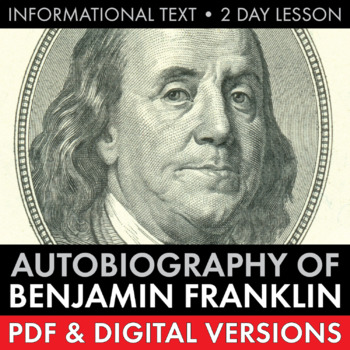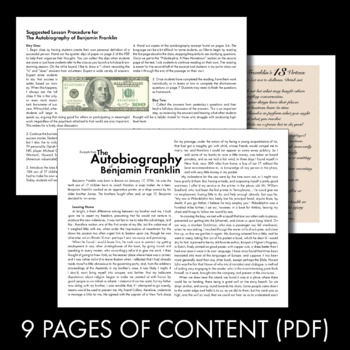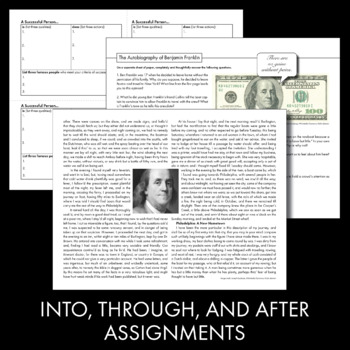Ben Franklin’s Autobiography, Informational Text, Franklin Aphorisms, 13 Virtues
- PDF
- Google Apps™

What educators are saying
Description
Use this two-day lesson pack to get your teens excited about studying the words and ideas of Benjamin Franklin, one of the United States’ most compelling founding fathers.
This 9-page download (PDF + Google Drive version of all student handouts):
• Detailed, step-by-step lesson procedure suggestions
• Brainstorming handout to help students create their own definition of a successful person
• Four-page excerpt of The Autobiography of Benjamin Franklin
• Critical-thinking question handout that requires students to dig back into Benjamin Franklin’s informational text and their own minds to find the answers
• Detailed answer keys for all questions, designed to make grading easy and help you guide class discussion
• Team activity involving 20 of Benjamin Franklin’s well-known aphorisms from Poor Richard’s Almanac
Click HERE for more high-interest informational text lessons.
Thanks for stopping by!
Cover image credit: Markus Volodymyr, WikiMedia Commons, Public domain





